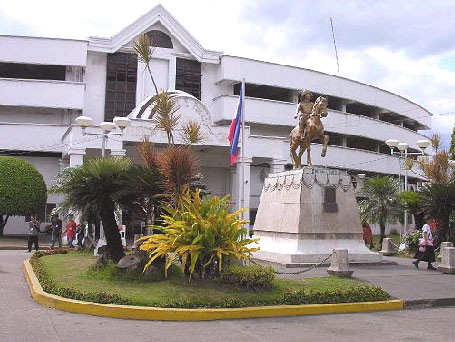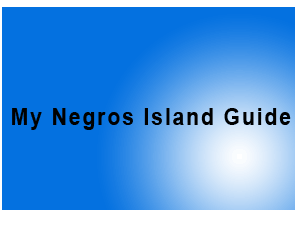- GENERAL INFORMATION
- General Info
- Money
- CITIES/TOWN
- Bacolod City
- Bago City
- Cadiz City
- Escalante City
- Himamaylan City
- Kabankalan City
- La Carlota City
- Sagay City
- San Carlos City
- Silay City
- Sipalay City
- Talisay City
- Victorias City
- Binalbagan
- Calatrava
- Candoni
- Cauayan
- EB Magalona
- Hinigaran
- Hinoba-an
- Ilog
- Isabela
- La Castellana
- Manapla
- Moises Padilla
- Murcia
- Pontevedra
- Pulupandan
- Salvador Benedicto
- San Enrique
- Toboso
- Valladolid

The Ruins
Like a lady wooed by her man, the Ruins play with your emotions especially at sunset with its orange pinks and purples hues. He charms, tickles and romances you. But at sundown, the Ruins take a different persona. With blue and golden sights emanating from nooks and crannies, it is now a lady, teasing, flirting, a temptress confident of her beauty as well as her majesty.

Bacolod …. Fun in the Mountain
Motor to the Hawaiian Philippines Company for some orientation on how the famous muscovado sugar is made. Here, you will have a good understanding of the island’s sugar industry and how it is able to sweeten your day.
Bago City

Bago was founded by an Augustinian priest, Father Geronimo Marin, on June 24,
1575, coinciding with the feast of St. John the Baptist. Spanish historian,
Diego de Povedano wrote that the community was named after a large tree called
“Bago” under which a native prince Mapagic died.
Another version, however, noted that the name came from the shrub, bago-bago
that grew abundantly in the riverbanks. Around the 17th and 18th Centuries,
settlers from Molo, Iloilo formed a little village at the mouth of Bago River,
presently a rich source of sand and gravel. The village grew into a large
settlement prompting its elders to pass a petition for its conversion into a
town or pueblo, which was granted in 1800.
Bago became a city on February 19, 1966 by virtue of Republic Act No. 4382 with
then Mayor Manuel Y. Torres as first city mayor, holding over from his election
in 1959. Bago City is a top rice producer in the province and is home to
industries like the Maao Sugar Central, Viva Mineral water bottling plant,
Ginebra San Miguel distilled products and the Alter Trade muscovado mill, among
others. It is host to the 40 to 80 megawatts capacity PNOC-EDC’s Northern Negros
Geothermal Project that will be commissioned in early 2007.
Festivals
Babaylan Festival - of all figures in the history of Negros Island, the Babaylan
is the most colorful and enduring. The Babaylan is a doctor, herbalist, artist,
medium, adviser, agriculturist and more, all rolled in one very interesting
character. He is the keeper of rituals and spirit agents in normal world. He
inspires awe and fear. The Babaylan Festival was conceived to highlight a unique
brand of Filipino heritage, one that dates back to the pre-Spanish period. The
festival aims to rediscover the region’s indigenous music, literature, dances,
rituals and other artistic endeavors.
Al Cinco de Noviembre or Cannon Festival is a historical festival that
commemorates the Negrenses’ bloodless revolt against the Spaniards led by Gen.
Juan A. Araneta in 1898. In commemoration of that historic bluff that freed
Negros from Spanish Conquestadores in 1898, the City Government of Bago
celebrates that event with gleeful reminiscence and pride for the great General
and his gallant men from this city who were armed with courage and ingenuity who
played a great role in the history of Negros. Spanish authorities in Bacolod
capitulated after seeing advancing troops armed with rifles and cannons which
were actually nipa stalks and rolled sawali mats painted black.
How to get there
Bago City is a 20 to 30 minutes drive south of Bacolod City by private car.
Public utility vehicles abound in this first stop over going south of the
provincial capital. Car rental facilities are available through reservation. All
roads leading to all barangays in the city are asphalted.
Location
Bago City is bounded on north by Bacolod City, on the northwest by Guimaras
Strait, on the southwest by the towns of Pulupandan and Valladolid, on the east
by the cities of San Carlos and Canlaon and on the south by La Carlota City.

